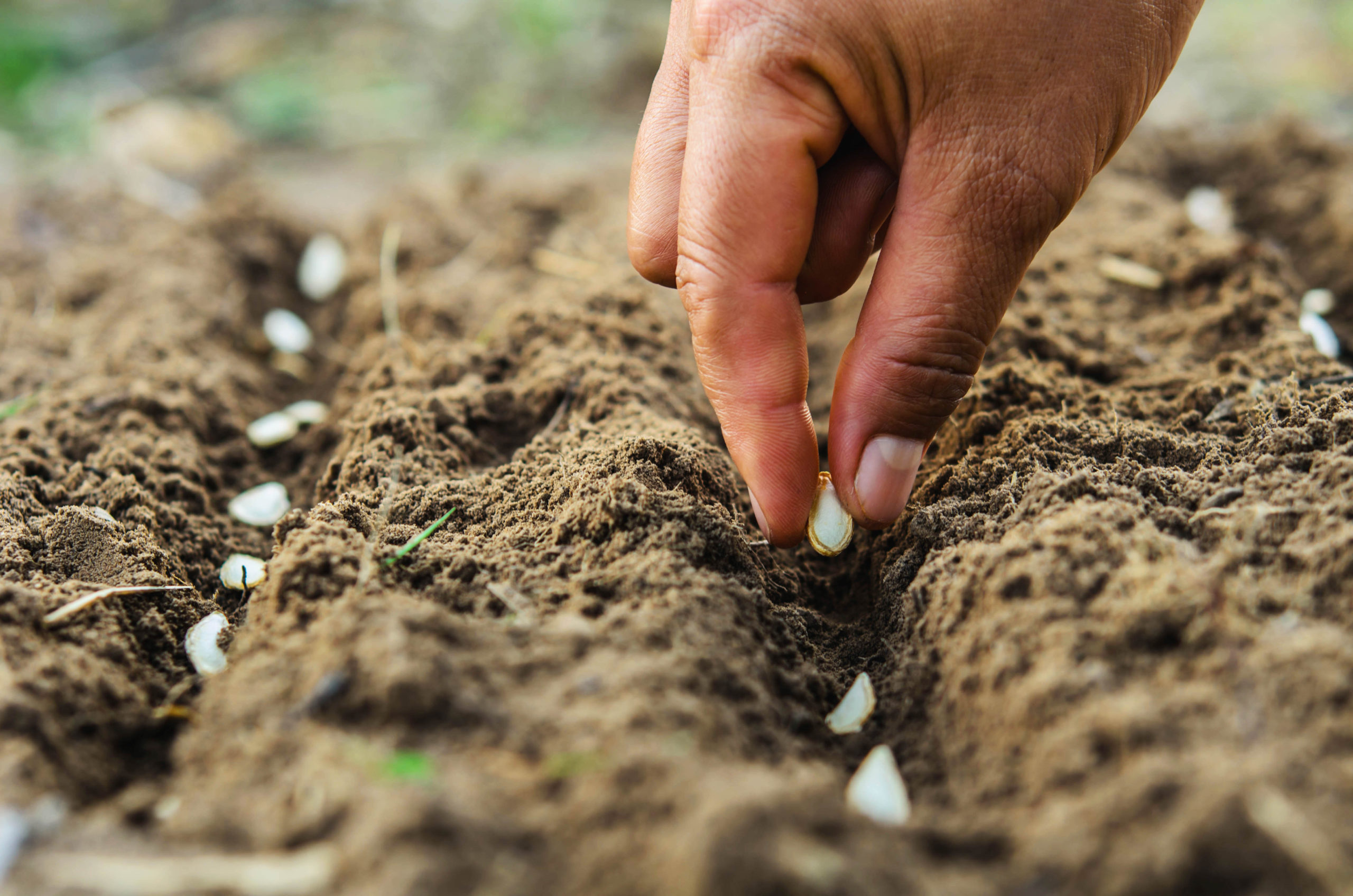When planning your garden, you will have to decide whether you want to start your plants from seed or purchase a small plant at a local garden nursery. While both options have their advantages, and there is no wrong answer, there is plenty to get excited about and learn from when you nurture your plants from seed to harvest.
The Benefits of Starting your Plants from Seed
While it may seem more convenient to buy a small plant you can purchase from a nearby plant nursery, there are plenty of good reasons and advantages of starting your garden plants from seeds.
- You can save money: Seeds are much cheaper than small starter plants and cost less when you buy them in larger quantities. You can also save the seeds you don’t use in a seed catalogue, which is a water and sun-proof container that protects your seeds until the next growing season. This makes starting plants from seed a fraction of the price.
- You can control the quality of your plant’s conditions: When you purchase a plant from a nursery, you aren’t sure how that plant has been raised or what fertilizers or chemicals they have used on it. When you start plants with your own seeds, you can monitor and control the entire growing process. This is particularly helpful for gardeners that want a completely organic plant.
- You don’t have to worry about transplanting: When you take a plant home from the store, it can be very vulnerable to its new environment. Plants can be traumatized by changes in temperature, humidity, brightness, and soil. When you start your seeds in your home or garden, it maintains a consistent and healthy growing environment.
- You’ll have much more variety: Plant nurseries can have a limited selection, especially depending on the time of the year. When you’re raising your vegetables from seed, you can find much more variety. This could mean varieties of a certain plant, heirloom options, organic selections, and much more.
How to Grow Plants from Seeds
There are two main methods for germinating seeds. One is by directly sowing the seed into your soil outdoors. The other method involves starting the seeds indoors with a seed starter kit.
Direct Sowing
This method of planting is simple and direct. You must prepare the soil by loosening it with a rake or fork. Then you can remove any large pieces of debris such as twigs and leaves. You may want to add additional soil or fertilizer to the ground to ensure the best growing conditions.
Check your seed packet to determine best practices for the vegetables you’re growing. Generally speaking, you will want to plant your seeds at a depth that is three times the seed’s diameter.
When you’ve finished planting your seeds, gently mist or water your plants. Add a stake with a label in the ground so you can easily identify (and avoid stepping on) your new plants.
Seed Starting
Seed starting is the process of germinating and growing your plants indoors or on a patio, and then transferring them to a larger container or outdoors. This method is particularly helpful if you want to start growing your plants before it’s warm enough for them outside.
A seed starter kit will optimally sprout your seeds and make it much easier to grow strong, healthy plants. They are a great option for beginner and intermediate gardeners. A seed starting kit will often come with a set of trays, a clear plastic cover, and labels. It may or may not include soil, or growing medium, which will provide nutrients and a solid foundation for plant growth.
Top 5 Best Vegetables to Grow from Seed
- Beans: This plant is well known for being a hearty easy to grow vegetable when starting with seeds. There are two main varieties of beans to grow: bush beans and pole beans. Bush beans are easier to grow and require less maintenance; however, pole beans often have larger yields.
- Radishes: This root vegetable is a great choice for planting outdoors in early springtime since the seeds can handle relatively cold temperatures. You can also successfully plant them in the fall.
- Lettuce: This leafy green is a versatile plant that will thrive in a variety of conditions. You can get great yields in sunny and shady areas of the garden, so it will likely do well in most gardener’s plots and homes. Make sure to allow at least 8 to 10 inches of space between each plant, so it has plenty of room to grow wide bushy leaves.
- Carrots: These tasty root vegetables are great for beginning gardeners that need a hearty plant with an easy to start seed. You can play with different seed varieties that will yield different colors, sizes, and even different amounts of sweetness!
- Basil: Although technically an herb, this plant is a powerhouse in the garden. While it can be a bit tricky to meet light requirements when grown indoors, it will thrive in a sunny environment outdoors with very little maintenance.
Growing vegetables is a great form of wellness that can provide education, exercise, and nourishment. Much of the fun is in the growing process, and starting your vegetables from seed allows you to enjoy the complete growing cycle of your plants.
Try a few familiar varieties at first and then expand into new vegetables as you get comfortable with the sowing and seed starting process. Before you know it, you will be an expert in your home garden with an abundance of fresh, affordable food!

